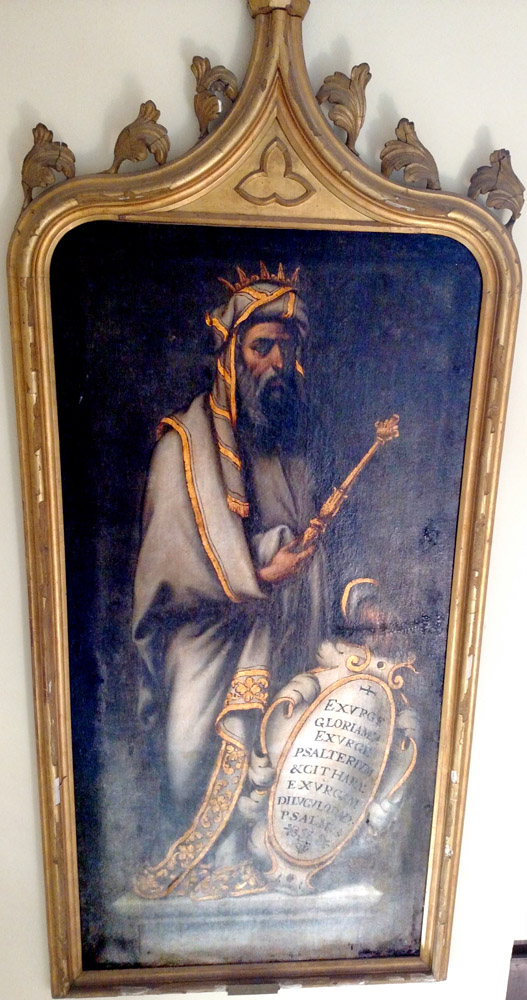
David the Prophet
18th century
Hospital de los Venerables Sacerdotes, Seville
The painting's label says, El Profeta David, "The Prophet David." He was considered a prophet because passages from the Psalms, which he was presumed to have authored, were considered prophecies of the Messiah.1 Usually his authorship is referenced in images by giving him a harp, but instead this painting puts a verse from psalm 56 on his shield: EXURGE GLORIA MEA EXURGE PSALTERIUM & CITHARA: EXURGAM DILUCULO DAVID PSALMUS ("Arise, O my glory, arise psaltery and harp: I will arise early – Psalm of David").
The shield also functions as a symbol of David's kingship, along with the scepter and crown. In art of the second millenium, crowns are almost universal as signifiers of David's kingship. They are often spiky like this one. Sceptres and shields are less common.
The turban-like headpiece and the capacious mantle are sometimes found in 18th-century images of Jewish priests. Thus, with the prophetic and regal references, David is presented as a precursor of Christ, the "prophet, priest, and king."2
View this image in full resolution.
Read more about King David.
Photographed at the site by Richard Stracke, shared under Attribution-NonCommercial-ShareAlike license.